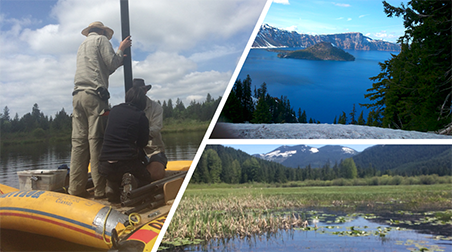
The destructive forces of volcanoes are well-known, from the local to global levels, yet they offer many benefits and as such over 29 million people worldwide live within just 10 km of active volcanoes. Volcanic activity can be a driver of short-term climate change and can impact on aquatic and terrestrial ecosystems at various temporal and spatial scales. This can have negative implications on society with disruption to food sources and other ecosystem services. However, the environmental impacts of distal ash deposition are poorly understood. The palaeoenvironmental records from lakes and bogs, are essential tools used to investigate the nature and duration of the environmental response to ash deposition, as continuous monitoring in active volcanic terrains is rare and few have the decadal durations required to measure environmental changes. Nonetheless, while a number of multi-proxy studies have indicated significant impacts, others have been ambiguous, reaching no clear consensus due to the difficulty to distinguish from background variability. Through the investigation of the Plinian eruption of Mount Mazama approximately 7600 years before present, this project carried out a high-resolution multi-proxy assessment of the environmental impacts this eruption had on terrestrial and aquatic ecosystems at Moss Lake, Washington. Understanding these ecological impacts is essential if society are to learn to live with volcanoes.
Joanne Egan is a senior lecturer in physical geography with a core interest in Quaternary environmental change. In particular, Joanne’s research has focussed on impacts and evidence of palaeo-hazards (volcanic eruptions, hurricanes and tsunamis) and tephrochronology. Joanne uses a multi-proxy approach including diatoms, pollen, fungal spores and charcoal from lake sediments to reconstruct these natural hazard events.
Joanne Egan’s webinar was presented on Wednesday 6th April.

